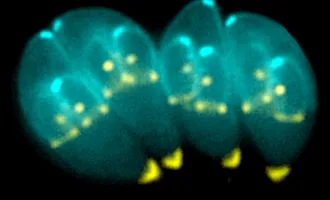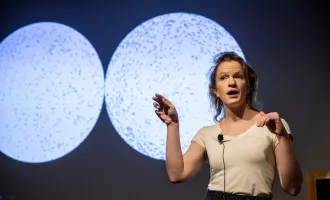Journal Club: Hematology, Virology, and Neuroscience.
HEMATOLOGY: Production of Factor VIII by human liver sinusoidal endothelial cells transplanted in immunodeficient uPA mice. Fomin, M.E. et al. (Muench). PLoS One. 8(10):e77255.
Both the liver and the kidney filter toxins from the blood; however, they achieve their goals in different ways. The kidneys remove toxins from the blood and send them to the bladder for excretion, while the liver removes toxins through biochemical breakdown of the toxins by liver parenchymal cells.
Liver sinusoidal endothelial cells (LSECs) separate the blood with the liver parenchyma and help transport toxins, support the structure of the liver and secrete the pro-coagulant Factor VIII into the blood.
In this paper, researchers comprehensively characterized human LSECs by flow cytometry and immunofluorescence, as well as in vitro cell culture from primary isolates. Furthermore, they were able to successfully transplant human LSECs into an immunocompromised animal model and show physiologically relevant levels of Factor VIII secretion into serum.
VIROLOGY: Effects of interferon-α treatment on anti-HIV-1 intrinsic immunity in vivo. Abdel-Mohsen, M. et al. (Pillai). Journal of Virology. October 23. [Epub ahead of print]
Interferon alpha (IFN-a) is a cytokine produced during viral infection that helps cells fight viruses through a variety of mechanisms, some of which are poorly understood. One way that IFN-a inhibits viral replication is through the induction of genes that can cut up viral DNA in the cell, called restriction factors.
IFN-a, therefore, may be a potential antiviral therapeutic because of these functions and has been used with success to treat, and even in some cases prevent, hepatitis B and C.
Because of these successes, IFN-a has also been investigated as a potential therapy for HIV. In this paper, scientists looked at levels of anti-viral restriction factors in the blood of patients infected with HIV and hepatitis C. Treatment with IFN-a and ribavirin significantly increased blood levels of restriction factors and correlated inversely with viral load.
NEUROSCIENCE: Neural encoding and integration of learned probabilistic sequences in avian sensory-motor circuitry. Bouchard, K.E.; Brainard, M.S. Journal of Neuroscience. 33(45):17710-23.
How does the brain develop complicated verbal communication so seamlessly? Neuroscientists think of complex forms of communication, such as speech and bird song, as sets of variable sequences that can be tied together. But how does our brain tie these sequences together and coordinate sensory input with motor (vocal) responses? Two main hypotheses exist: in one, scientists model the probability of transitioning from speaking “A” sequence to any “X” sequence afterwards.
In this paper, though, researchers modeled the probability of speaking “A” sequence after any “X” sequence spoken beforehand, called the “convergence” theory. To test this experimentally, they played a randomized series of vocal sequences to songbirds and compared their vocal responses to their expected model.
Overall, they found a significant correlation of the songbird responses with their convergence theory, which was better at predicting responses than the previous (called “divergence”) theory. In conclusion, the convergence theory appears to predict the sensory-motor circuitry of songbird “language” and could be applied to other complex systems.


